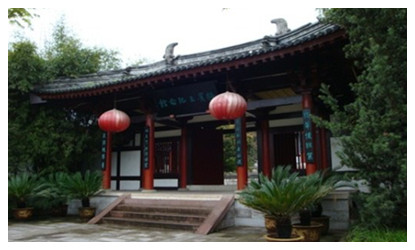Skype: neodalle-travel
Tel: +86 135 7447 2266
E-mail: sales@zhangjiajieholiday.com
 Luo Binwang is historically known as one of the four greatest poets (the other three were Lu Zhaolin, Wang Bo and Yang Jiong) in the early period of Tang Dynasty (618-907). Luo Binwang was born to be a poet, and at the age of seven composed his first masterpiece-Ode to the Goose, which is learnt by almost every Chinese person when they are young. Because of this, he was acclaimed as a child prodigy.
Luo Binwang is historically known as one of the four greatest poets (the other three were Lu Zhaolin, Wang Bo and Yang Jiong) in the early period of Tang Dynasty (618-907). Luo Binwang was born to be a poet, and at the age of seven composed his first masterpiece-Ode to the Goose, which is learnt by almost every Chinese person when they are young. Because of this, he was acclaimed as a child prodigy.
In the history of literature, Luo Binwang was a very influential figure, since he had produced countless poems and articles, among which more than 130 poems and over 30 articles had been left for posterity. However, he was not that complacent in politics. In the domination of Empress Wu Zetian, he joined the rebellion against Wu. Serving as a secretary of the rebellion leader, he even wrote the famous official document against Wu, which shocked and was even praised by Wu for his talent. After the failure of the rebellion, Luo Binwang evaded capture, and disappeared from people's eyes (some one said he had died, while some others said he had become a Buddhist monk).
The tomb we see today was restored in 1989. Facing west, the body of the tomb is hemispherical, whilst the tomb passage is orbicular. In front of the tomb, there is a gateway-form memorial stele with four posts. Flourishingly evergreen pines and cypresses grow surrounding the tomb.
Visitors will be impressed by the tranquil air of the Tomb of Luo Binwang, and ponder the events of Chinese history while wandering around the tomb.
 Ask Questions ?
Ask Questions ?